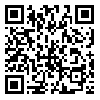Mon, Oct 20, 2025
[Archive]
Volume 32, Issue 1 (2-2018)
Med J Islam Repub Iran 2018 |
Back to browse issues page
Download citation:
BibTeX | RIS | EndNote | Medlars | ProCite | Reference Manager | RefWorks
Send citation to:



BibTeX | RIS | EndNote | Medlars | ProCite | Reference Manager | RefWorks
Send citation to:
Mahdieh N, Saedi S, Soveizi M, Rabbani B, Najafi N, Maleki M. A novel PKP2 mutation and intrafamilial phenotypic variability in ARVC/D . Med J Islam Repub Iran 2018; 32 (1) :22-26
URL: http://mjiri.iums.ac.ir/article-1-4644-en.html
URL: http://mjiri.iums.ac.ir/article-1-4644-en.html
Cardiogenetic Research Laboratory, Rajaie Cardiovascular Medical and Research Center, Iran University of Medical Sciences, Tehran, Iran & Rajaie Cardiovascular Medical and Research Center, Iran University of Medical Sciences, Tehran, Iran. , mmcardiacrhc@gmail.com
Abstract: (4017 Views)
Background: Arrhythmogenic ventricular cardiomyopathy (AVC) is an inherited cardiac disorder affecting 1 in 1000 individuals worldwide. The mean diagnosed age of disease is 31 years. In this article, an Iranian family reported that they were affected by ARVC due to a novel PKP2 mutation.
Methods: Clinical evaluations, 12-lead ECG, CMR, and signal-averaged ECG were performed. After DNA extraction, genetic testing was done, and PCR-sequencing was applied to find causal mutations. Segregation analysis was also performed for the family.
Results: ARVC criteria were documented in the patients. Genetic testing revealed a novel chain termination mutation (p.Tyr168Ter) in PKP2 gene; this mutation was transmitted from the mother to her 23-year-old son, but only the son was affected with ARVC.
Conclusion: Modifier genes were indicated using interactome analysis of Plakophilin 2 protein (PKP2); they might have led to phenotypic variability through cellular mechanisms, such as nonsense-mediated mRNA decay. At least, 9 proteins were identified that might have affected Plakophilin 2 protein function, and consequently, rationalizing this intrafamilial phenotypic variability. This study highlighted the role of modifier genes involved in ARVC as well as the major role of PKP2 mutation in developing the disease in our population.
Methods: Clinical evaluations, 12-lead ECG, CMR, and signal-averaged ECG were performed. After DNA extraction, genetic testing was done, and PCR-sequencing was applied to find causal mutations. Segregation analysis was also performed for the family.
Results: ARVC criteria were documented in the patients. Genetic testing revealed a novel chain termination mutation (p.Tyr168Ter) in PKP2 gene; this mutation was transmitted from the mother to her 23-year-old son, but only the son was affected with ARVC.
Conclusion: Modifier genes were indicated using interactome analysis of Plakophilin 2 protein (PKP2); they might have led to phenotypic variability through cellular mechanisms, such as nonsense-mediated mRNA decay. At least, 9 proteins were identified that might have affected Plakophilin 2 protein function, and consequently, rationalizing this intrafamilial phenotypic variability. This study highlighted the role of modifier genes involved in ARVC as well as the major role of PKP2 mutation in developing the disease in our population.
Type of Study: Original Research: Basic Science in Medicine |
Subject:
Medical Genetics
Send email to the article author
| Rights and permissions | |
 |
This work is licensed under a Creative Commons Attribution-NonCommercial 4.0 International License. |







